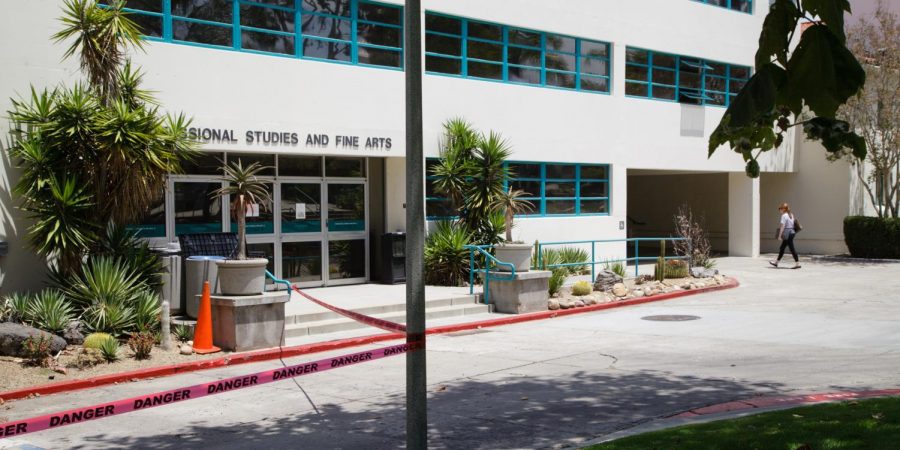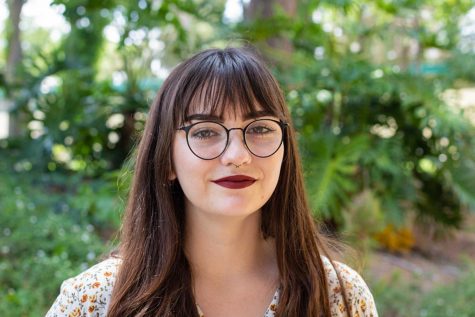Faced with a deadline to finish $2.5 million in renovations to a San Diego State University building or risk losing most of the funds, campus officials made a series of decisions that threatened the health of students, faculty and staff, records obtained by inewsource show.
A roofing material used in the construction sickened dozens of people and eventually led officials to close the Professional Studies and Fine Arts building in mid-March after weeks of complaints about noxious odors that enveloped classrooms, offices and hallways. Hundreds of classes were held in the building before it was vacated.
Now, campus officials plan to spend up to $12 million to make more renovations to the PSFA building, including $2.5 million to replace the roof where the problems started.
The difference with the new renovations: The work will be done when the building is mostly unoccupied. It reopened in May but remains largely vacant and might not be fully operational until May 2021.
More than 800 pages of documents inewsource obtained through public records requests detail how this construction project got so badly off track. Fear of losing funds for the work was a factor.
Bob Schulz, the college’s associate vice president of real estate, planning and development, wrote in a March memo to a top administrator that in hindsight, officials “should have deferred construction until this coming summer.”
“Our thinking last fall was that such a delay would have put our funding at risk due (to) funding expiration dates, and we believed we had a plan to complete the work before the start of spring classes.”
Cory Marshall, a university spokeswoman, initially told inewsource that SDSU was at risk of losing $2 million of the initial renovation budget if the funds weren’t spent by June 30.
Now, Marshall said, campus officials were “just informed” the deadline is actually June 30, 2020, which means they didn’t need to do the work when classes were in session.
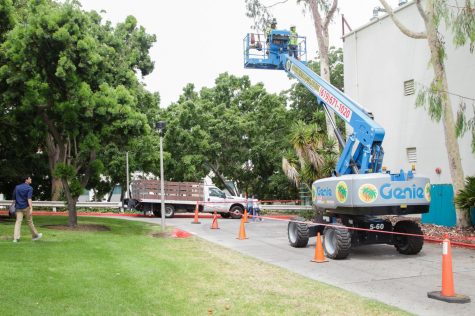
The PSFA building serves many purposes on campus, with four floors of classrooms, offices, science labs, a small library and multiple academic departments. But a university official said the building, which was constructed in 1955, has had problems that date back a couple of decades.
Repairs to the PSFA building, including patching the roof, were supposed to have begun last summer. That didn’t happen when SDSU couldn’t get state fire permits for the project, so the work was delayed until the winter break.
Then the rains came and the roof repairs didn’t hold. Leaks sprung throughout the building, and workers began using a roofing material with carcinogenic compounds that created chemical odors. By then, it was late January and students, faculty and others were back in the building. Over 200 classes were being held there every week.
The university received 29 formal complaints about health problems people in the building were experiencing from the fumes – everything from migraines to vomiting to nosebleeds. One faculty member in a February email to an SDSU administrator called the situation in the building “inhumane.”
“Plus, it is just wrong to ask people to work in these conditions,” he wrote.
Because of the complaints, the university began monitoring the air quality in the building.
inewsource shared some of those results with Celeste Monforton, who has a doctorate in occupational and environmental health from George Washington University and lectures on public health at Texas State University. She also worked at the U.S. Labor Department for about a decade, including for the Occupational Safety and Health Administration.
Monforton said the vapor levels from the roofing material hovered just below what federal standards deem permissible in a workplace. If the university had properly assessed the building’s airflow before the repairs began, she said, the health issues the occupants experienced likely could have been predicted and avoided.
Her conclusion: “This could be a case study in how not to do projects.”
Dangerous odors met with slow response
inewsource recently interviewed three university officials about what went wrong with this renovation project and why. Answering questions for about an hour were Eric Hansen, assistant vice president for business operations; Jessica Rentto, associate vice president of administration; and Amanda Alpiner, campus planner.
Hansen and Rentto said university officials never expected to put anyone’s health at risk.

“We have hundreds of projects every year that we do. This was one case that did not work the way that we intended it to,” Hansen said. “We’re never intending to create an environment that feels dangerous to anyone.”
Hansen said the building’s age made repairing the roof challenging. The first material used to patch it failed. When the rains came and leaks sprouted in the building, a tar-based construction adhesive called Tremfix was tried.
Coal tar pitch is a primary ingredient in Tremfix and many of its compounds are known human carcinogens, according to the National Toxicology Program. And it was this material that polluted the building’s air with coal tar pitch volatiles – a vaporous form of a thick black liquid derived from coal.
The reason the chemical vapors lingered in the PSFA building is because the ducts that brought in fresh air are on the roof, Schulz said. The poor condition of the building’s heating, air conditioning and ventilation system meant once the odors got into the building through the fresh air ducts, they were difficult to remove, he said.

The odors were so pervasive that building occupants complained on Jan. 29, the first time Tremfix was used on the roof, according to a university timeline about the project. On the same day, campus workers did air monitoring for volatile organic compounds, including coal tar pitch volatiles, and found no elevated levels.
About six weeks later, when targeted air monitoring for coal tar pitch volatiles was done, the levels were just barely under the federal OSHA’s safe limit and well above the limit established by the National Institute for Occupational Safety and Health.
Monforton said OSHA’s safety limits are widely understood to be outdated, with the agency describing them as “inadequate for ensuring protection of worker health.” She said the levels observed in the PSFA building could easily be associated with the kinds of health symptoms occupants reported. And, given the levels were measured after the project’s completion, she said they were probably higher when the building was still occupied.
Less than two weeks before any air monitoring was done for coal tar pitch volatiles, workers in the PSFA dean’s office complained about the odors.
“I have just returned to my office and within five minutes am experiencing burning eyes, tasting the fumes in my mouth and throat,” Donna Conaty, interim dean of the PSFA school, wrote in a Feb. 28 email to campus planner Alpiner.
“No one in this building believes prolonged exposure is safe,” Conaty said.
Bey-Ling Sha, who was the acting associate dean for the school at the time, replied that she agreed with Conaty’s “well-put assessment of the situation.”
“Today, staff actually brought in face masks to filtrate whatever is in the air,” she said.
Immediately after these emails were written, Alpiner told the dean’s office the building’s occupants would be relocated to the humanities building starting March 4, more than a month after complaints started.
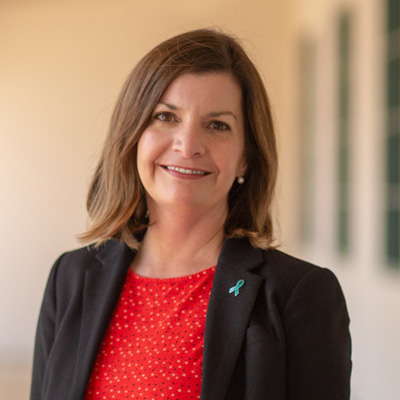
Rentto told inewsource university officials made relocating everyone a priority after they realized they couldn’t fix the odor problems. Documents show at least 20 different methods were tried to reduce the odors, including propping open doors and windows and accelerating the release of the vapors.
“Moving people is extremely disruptive,” Rentto said. “I think trying to minimize vapors coming into the building was our initial priority.”
While the occupants of the PSFA building scrambled to move out, students were left to learn about the debacle through word of mouth, with no notification from the university about the odor issues until March 11.
Student Brandon Lim, the PSFA College Council president, said the “lack of transparency” by university officials was troubling.
“As a student, the fact that a building is closed because of health reasons, it’s almost negligent, I suppose, on the university’s part.”
Even with no official acknowledgment of the building’s problems, it had been clear for weeks that something was wrong. Aside from the obvious chemical odors, the halls were dotted with large fans – loud enough to drown out lectures in nearby classrooms. Professors were canceling office hours and moving classes online.
University officials now say they should have done a better job communicating what was going on with the building’s air quality — especially when it came to the students.
“I think if we knew what we know now, notifying folks earlier would have been something we would have done,” Hansen said.
Regaining campus trust begins
The PSFA building was officially closed on March 13, six weeks after the first odor complaint was reported.
By the end of that month, the university had received a violation notice from the San Diego County Air Pollution Control District, citing the release of coal tar pitch volatiles into the building.
The district’s notice described the violation as: “Discharging from a source, quantities of air contaminants or other material which cause injury, detriment, nuisance or annoyance to any considerable number of persons.”
Roofing consultant Tremco, which recommended using Tremfix, and subcontractor Sylvester Roofing of Escondido also received violation notices. A county spokeswoman said penalties for the violations have not yet been determined.
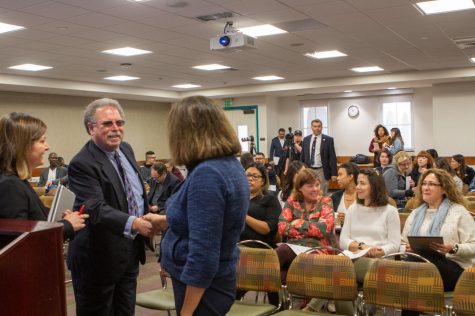
Faced with criticism from the campus community over how the air quality problems had been communicated, university officials announced two public forums in April. The first one, held during spring break, was packed with faculty, staff and students.
After listening for more than an hour to demands for answers about the noxious odors in PSFA, SDSU President President Adela de la Torre announced the building would not reopen after the break as had been planned.
Four weeks later, de la Torre in an open letter to the campus referred to the PSFA project as a failure by SDSU leaders to provide “nimble and transparent” communication. The letter promised changes, including having one department handle all “high stakes and time-sensitive communication.”
Going forward, de la Torre said, “We will communicate what we know and also what we don’t yet know.”
As part of its effort to better communicate with the campus, the university created a website on the PSFA renovations and roofing project.
One thing officials are not doing is making public if anyone is being disciplined for the construction debacle and the communication issues.
“I don’t believe that there’s blame to be laid on an individual,” Rentto said. “I think as an institution we need to do a better job of communicating, and that’s what we’re working on.”
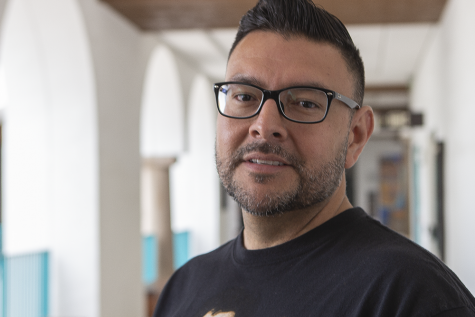
Nathian Rodriguez, a media studies professor who taught in PSFA, questioned if that approach and the steps the administration has taken to regain the campus community’s trust will work.
“Without taking responsibility and shifting the blame back and forth, nobody is able to look at themselves and look at their specific department and role and how can they change it and do better for next time,” Rodriguez said.
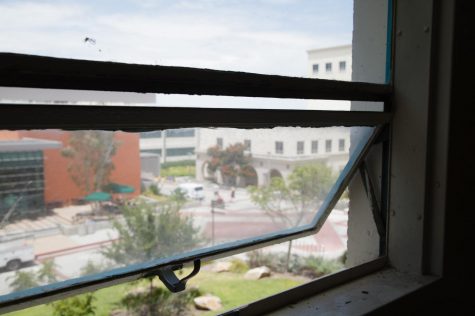
Although the university’s website says the PSFA building is “fully opened,” officials acknowledge no classes will be held there this fall except science labs. Few of its former occupants have returned to work in the building.
“For me, personally, to go back into PSFA, it would be for them to be able to make sure that it was safe and assure us that we weren’t going to get sick again,” Rodriguez said.
Lim said some students feel the same way. “It’s summertime and it’s been half a year since the building closed, and we’re still kind of searching for answers,” he said.
University officials say the $12 million in renovations now planned for the PSFA building include work to address concerns raised at the April forums. Besides a new roof, the building will get new windows, doors and plumbing. Improvements also will be made to the heating, air conditioning and ventilation system, and fire code corrections will be made, according to the university’s website.
Sylvester Roofing will again do the work on the roof, but Tremfix won’t be used, a university spokeswoman said. The decision was made to replace the roof, she said, because even though Tremfix effectively sealed the portion of the roof that was repaired the rest remains vulnerable to leaks.
If all goes well this time, Hansen said an improved version of the PSFA building could be completed by fall 2020, though the university’s website says it could take another year.
This story was reported and written by Bella Ross, an inewsource intern and the editor of The Daily Aztec. It was edited by inewsource Managing Editor Laura Wingard.
inewsource is an independent, investigative journalism nonprofit that is supported by foundations, philanthropists and individual donors. It is based in the KPBS newsroom on the campus of San Diego State University. inewsource’s mailing address is also in the Professional Studies and Fine Arts building.




